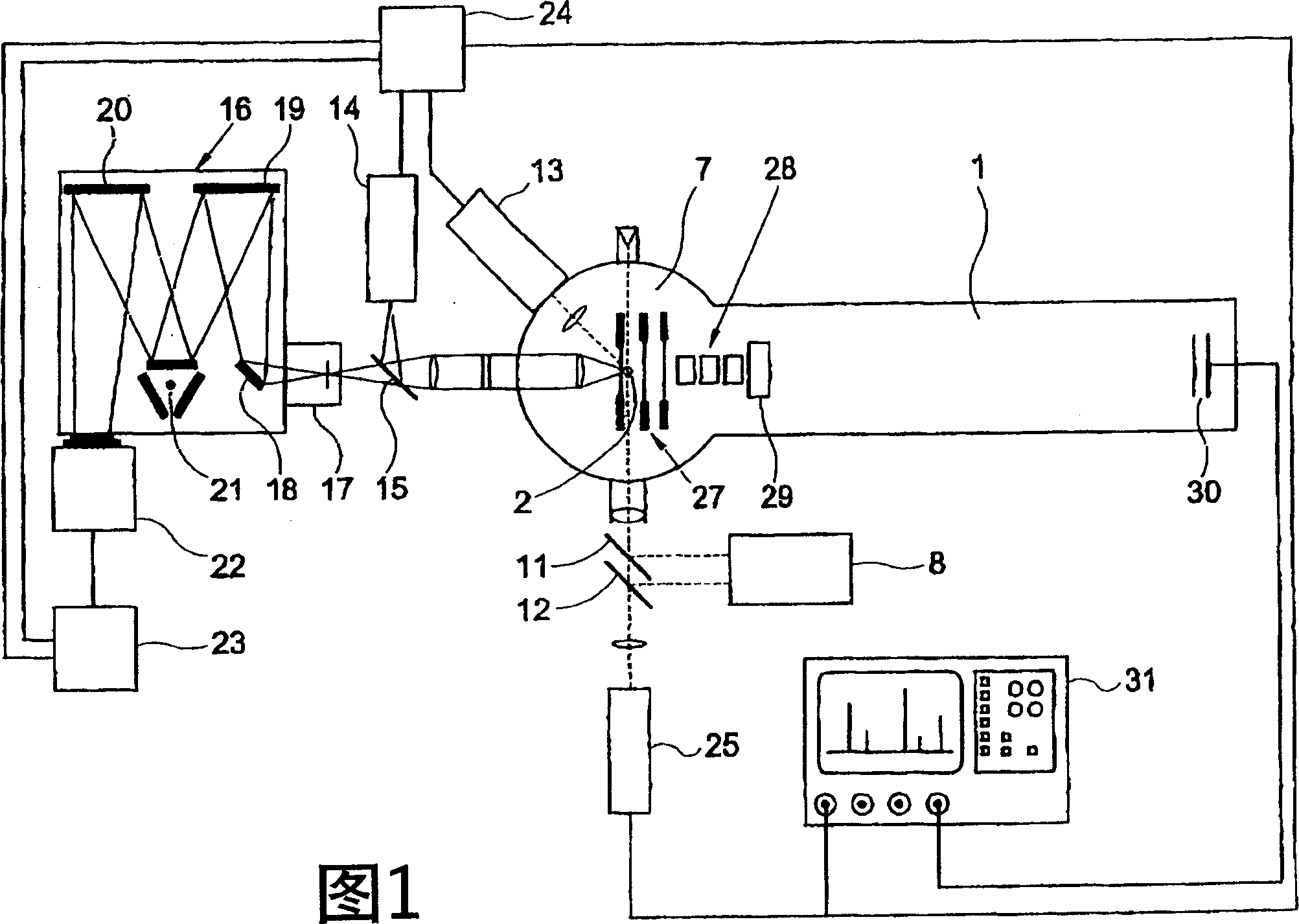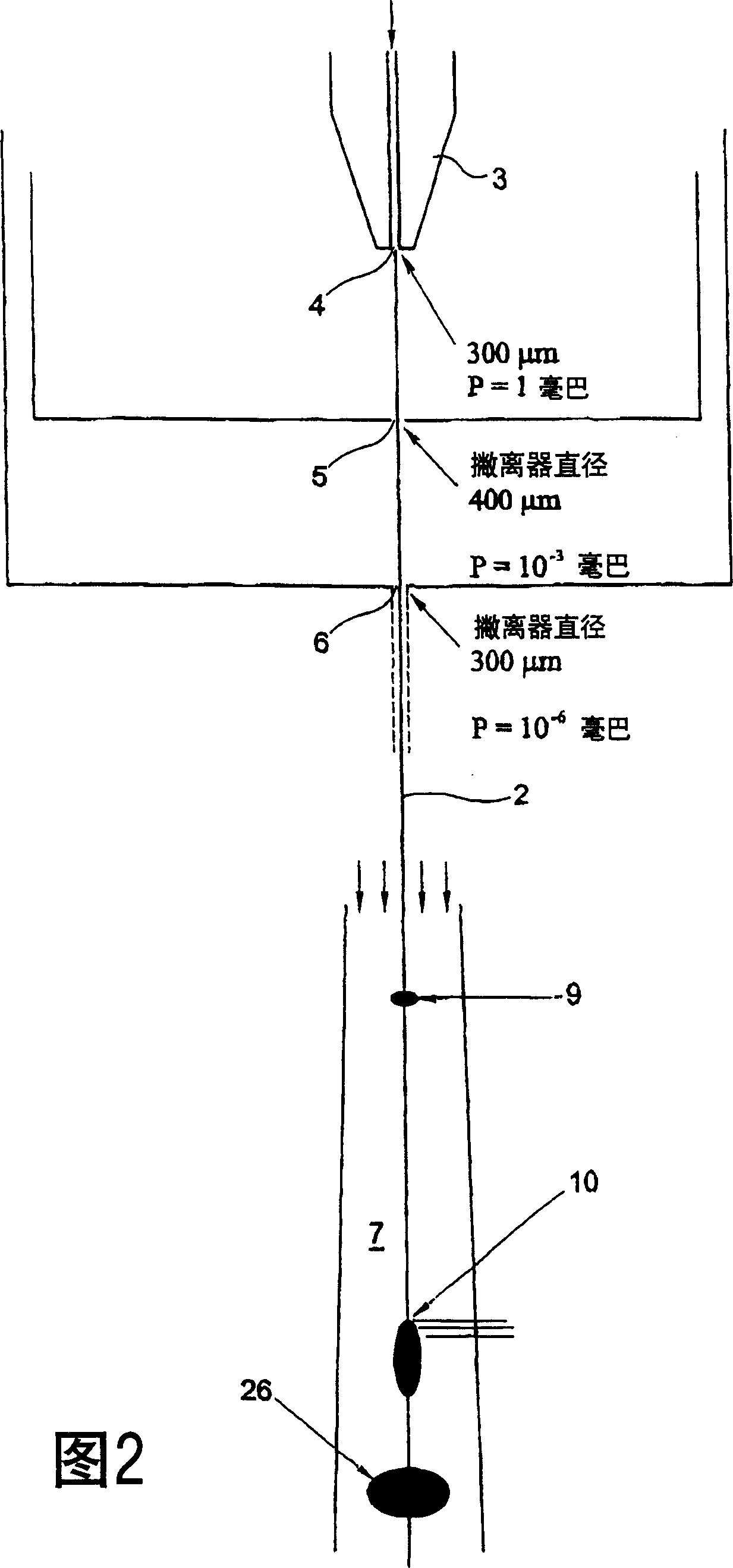Method and device for detecting and identifying bio-aerosol particles in air
A bioaerosol and particle technology, applied in the direction of measuring devices, particle and sedimentation analysis, parts of particle separator tubes, etc., can solve unsatisfactory, insensitive bioaerosol particles and other problems
- Summary
- Abstract
- Description
- Claims
- Application Information
AI Technical Summary
Problems solved by technology
Method used
Image
Examples
Embodiment Construction
[0010] The ATOFMS shown in Figure 1 is shown in section, ie perpendicular to the flow of aerosol particles. The flow of aerosol particles essentially follows line 2 . Aerosol particles are drawn from the air into the ATOFMS, and the inlet part of the device is provided at high temperature with a coating originating from easily sublimable substances. For this purpose, it is known to use, for example, pyridinecarboxylic acid or sinapinic acid. The aerosol particles are then bundled by a pneumatic lens system, converging nozzle and skimmer. Figure 2 diagrammatically shows how the flow of aerosol particles enters the central space 7 of the ATOFMS from the nozzle 3 of the above-mentioned inlet section through the outlet 4 of 300 μm and the skimmer openings 5 and 6 of 400 μm and 300 μm respectively. This space is continuously traversed by aerosol particles one after the other at a specific mutual distance. In this example, the velocity of aerosol particles entering the central ...
PUM
 Login to View More
Login to View More Abstract
Description
Claims
Application Information
 Login to View More
Login to View More - R&D
- Intellectual Property
- Life Sciences
- Materials
- Tech Scout
- Unparalleled Data Quality
- Higher Quality Content
- 60% Fewer Hallucinations
Browse by: Latest US Patents, China's latest patents, Technical Efficacy Thesaurus, Application Domain, Technology Topic, Popular Technical Reports.
© 2025 PatSnap. All rights reserved.Legal|Privacy policy|Modern Slavery Act Transparency Statement|Sitemap|About US| Contact US: help@patsnap.com


